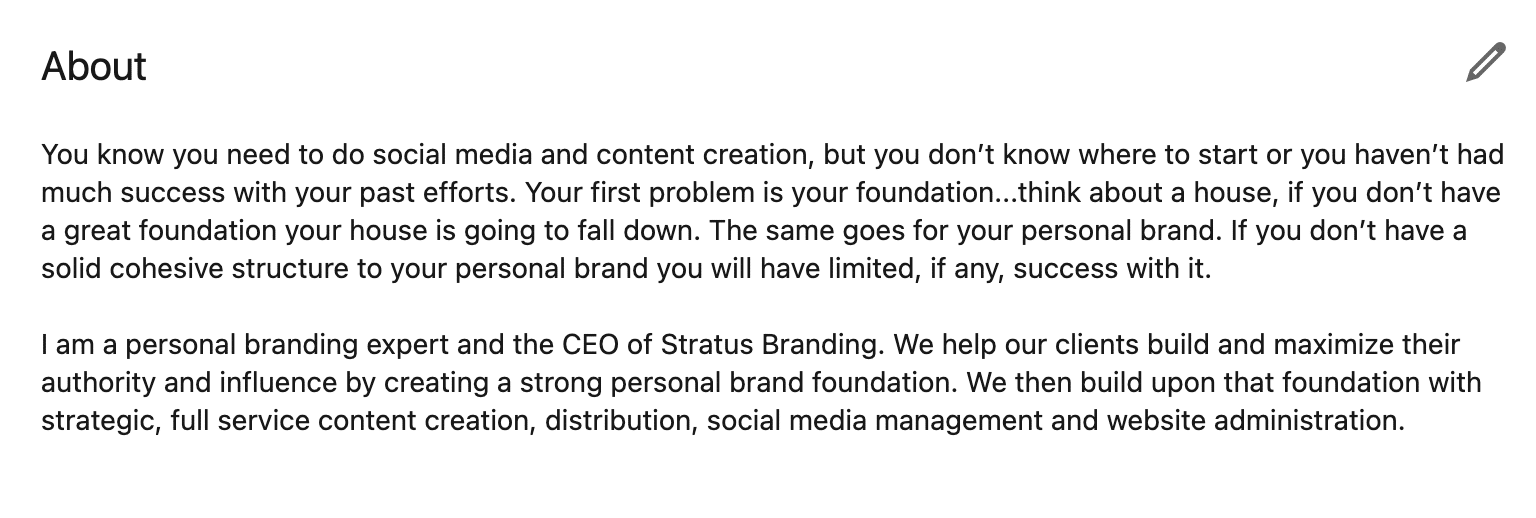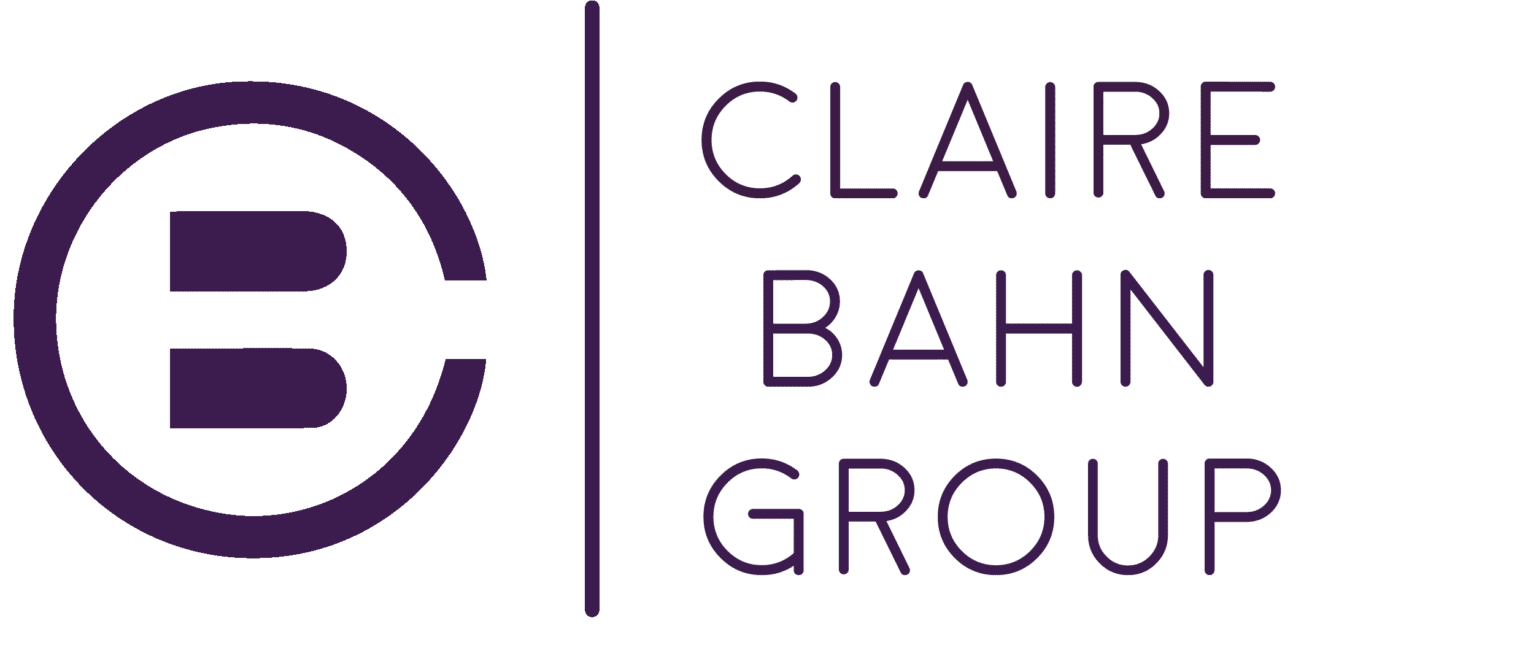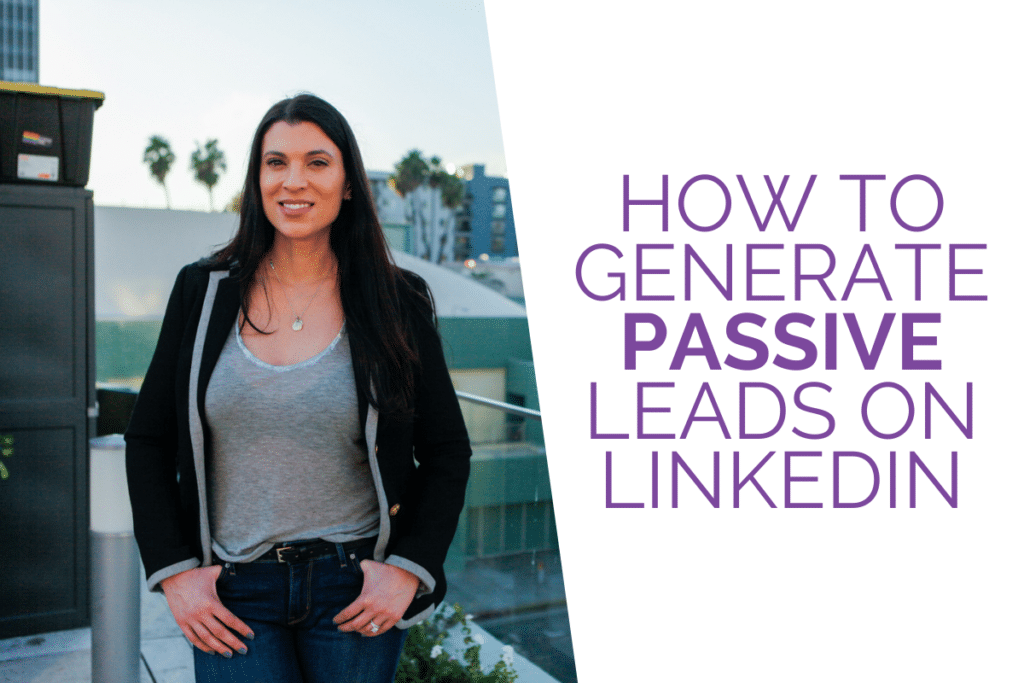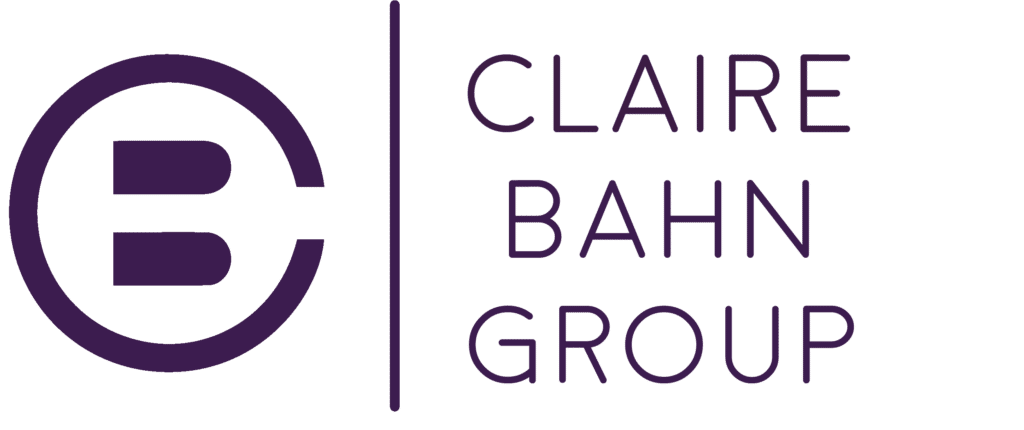Last month, we went over the basics of lead generation. You need it for your personal brand as much as you need it for a business-facing company. Social media is a big part of that strategy, which is why today we’re talking specifically about how to use LinkedIn for lead generation.
When you’re targeting consumers with a product, platforms like Instagram and Tik Tok are the heavy hitters. That’s because you can easily share or even tag the products you’re selling. Plus, they’re the best platform to get product reviews and accessible user-generated content.
When it comes to business-to-business marketing, you need to know which platforms will generate the most leads. And as much as I love Instagram, if you’re looking for clients, it’s not the best (or easiest) place to be.
After a few years of heavy content marketing trial and error, I’ve realized that LinkedIn and Twitter are the best platforms for obtaining leads.
Here’s why:
Not only is the organic reach monumentally superior to pay-to-play areas like Instagram and Facebook, but it’s simply the most likely place you’ll find your ideal client.
Even if you’re a startup founder looking to find an investor to help launch your product, where do you think you’re going to find investors in the digital world?
Not on Instagram. Trust me, I’ve looked.
Linkedin is where you find other people who understand the business world. You’ll spend a lot less time convincing these people to pay for your services. This makes your lead generation strategy a lot more passive— and a lot more successful.
Why Personal Brands Use LinkedIn For Lead Generation
Now, I’m not going to be one of those “trust me” strategists. I spend most of my time (maybe too much time) researching marketing possibilities for my clients and me. So you better believe that I have that statistics to back up my reasoning for turning to LinkedIn.
First, let’s consider buying power. Again, selling $15 up to $100 products can be done quickly through simple content marketing on Instagram. You might repetitively share reviews, user-generated content, or videos of people using your product before they finally make that impulse buy.
However, when you’re asking someone to part with $500 or thousands of dollars on your service, you need to be asking people with enough capital to logically part with that money.
According to Linkedin, their audience has twice the buying power of the average web audience. That’s likely because LinkedIn’s demographic is college-educated workers who are typically higher-salaried earners.
Half of all US adults with college degrees use LinkedIn (Pew Research Center, 2018), whereas less than 40% of high-earners use platforms like Instagram and Pinterest. On top of being high-earners, it’s also where you’ll find the “big dogs.” Think CEOs, investors, and founders of Fortune 500 companies. Nearly 25% of their total user base are senior-level influencers (LinkedIn, 2021).
Quality Over Quantity
These people might not think twice about spending $1,000 a month on a copywriter, whereas someone you’re trying to cold-DM through Instagram has to convince herself a million times over that she needs to outsource your expertise.
The more people pay for your services, the fewer clients you’ll need. As long as you’re marketing the right freebies and solutions to your LinkedIn audience, you’ll spend less time worrying about where to find your next client. From there, you’ll have the freedom to spend more time on your own personal brand and really scale your profits.
Social Media Examiner even did a study to point out that LinkedIn is the second most popular business-to-business social platform, just behind Facebook. Considering that Facebook’s organic reach is all but nonexistent these days, I think it’s safe to assume that LinkedIn is the best place to be for B2B brands.
RELATED: HOW TO BECOME AN INDUSTRY LEADER
4 Ways To use Linkedin for Lead Generation
Before we get you to the level of passively generating top-dollar leads (without spending a penny), you need to be making sure that people see you on LinkedIn. This means doing the upfront work to niche down your target audience, content, and strategy.
Truth be told, there’s plenty of ways to generate leads for your brand. I’ve already covered the basics of lead generation, and if you want to get leads from other social media platforms, you can find more information on this page.
But if you’re as convinced as I am that you can use LinkedIn for some easy lead generation, then read on. Below are four things I do every month to make sure my ideal clients are connecting with me.
1. Have an amazing profile
How predictable of me! Just so I don’t lose you here, let me break down a few things you should never do, but are (unfortunately) seen all too often on LinkedIn:
1. Don’t brag
Here’s a video on that. Nobody who will spend money on your product wants to hear you brag about your success. Success is never linear, so stop trying to sell people that your way is the only way.
2. Don’t have crappy photography
Your headshot can make or break you on LinkedIn. There’s a whole science about it. I wrote about this for Online Profile Pros, but basically, “Photos that look too posed, or have you in a high powered suit, might look like you’re trying a little too hard to look professional and polished. But photos in a tank top with heavy makeup would best be reserved for a more casual platform, like Facebook or online dating.”
3. Don’t have a banner that says nothing
It’s time to get rid of those gradient backgrounds or the picture of you hiking the Grand Canyon. We get it. You’re relatable. You have a life outside of the office. But on LinkedIn, recruiters and potential clients want a quick snapshot of your work ethic. By now, you should know that your LinkedIn profile is like a mini resume or an enlarged business card. Make sure your banner highlights what you do. (Hint: if you want more speaking opportunities, use that as your banner image).
4. Don’t have a confusing title
Use your personal brand statement or simply your title and who your ideal client is. I have an entire blog on how you can come up with your own in about 10 seconds!
5. Don’t forget your ‘About Me’
This is where you can use your personal brand voice to highlight your personality. Remember, this isn’t Instagram. Nobody is looking for curated photos to judge you by. Use your wit, humor, and intelligence to tell people about your journey in your industry. Keep it short and simple, and make sure to break up the text for easy reading.

6. Don’t have irrelevant job history
If you’re starting in a new industry, then you may need to have your complete work history. However, don’t try to be modest. List anything and everything related to your experience, from your freelance work to your internship.
Why is your LinkedIn profile important for lead generation? Because if you can’t even make that look put together, people aren’t going to trust that you’re actually an expert in your industry.
2. Share content strategically
Yep, that’s right. You can’t just have a fully configured profile and think people will be coming to you. It’s time to prove yourself with consistent content.
But it’s not enough to post what you’re thinking about that day and move on— this isn’t Twitter. First, you need to figure out which type of content performs the best. There is:
- Simple captions
- Captions with photos of you
- Carousel/PDF posts
- Videos
- Testimonials
- Graphics
- LinkedIn Pulse blogs
- Native videos
And a lot more. Personally, I’ve seen the most success with videos and swappable content. From there, it’s a manner of figuring out when to post and how often.
Think about when your ideal client is likely to take a scroll break. Is it while they’re drinking their morning coffee or during lunch? Or is it late at night after the kids are asleep?
Consider what your ideal client does daily and test out different types of posts at different times. Pay attention to your analytics. After a few months, you’ll know the perfect time for you to post for your ideal client to potentially become a lead.
Here’s a tip directly from LinkedIn’s blog about your posting cadence:
“Let the 4-1-1 rule guide your content shares: For every content asset, you share about your brand, share an update from another source and four pieces of content published by others. This keeps your feed focused on your audience’s needs, rather than on your organization.”
RELATED: HOW TO BE MORE CONFIDENT ON VIDEO
3. Be Social
LinkedIn is a social media platform, which means you need to say something if you want people to notice you. I’m not particularly eager to interact with others with the same title as me to avoid competition, but you can always look over their content to see what conversations are being had.
Some of my personal strategies on LinkedIn involve searching relevant groups for conversations… and then putting my two cents in! Leave comments that express your perspective, even if you disagree with the original poster.
Ask questions, too! From time to time, I’ll look at posts made by industry leaders (like Tony Robbins or Gary V) and read through their comments. If I see an insightful post from someone who looks like they might be my ideal client, I’ll respond to them specifically.
A better way to be social is to start the conversation yourself. That’s why it’s so important to have a variety of content circulating. Try to grab your follower’s attention with a video with emojis, scroll-stopping graphics, and post polls to get feedback (and engagement).
4. Know LinkedIn Loopholes
You might be wondering how all of this LinkedIn activity translates into lead generation. Naturally, the more you market yourself, the more people will know about you. And the more people know about you, the higher potential you have to attract your ideal client.
Unfortunately, it’s not as straightforward as it sounds. Even if you are showing up daily and posting informative content that displays your expertise, you need to be privy to LinkedIn’s algorithm and its loopholes.
The first need to know about Linkedin is that links hinder your reach. It’s the same on Facebook. These social media giants make money through ads, so when you keep sending people off their platform and onto yours (aka your landing page or website), LinkedIn doesn’t like that.
As a loophole to this, anytime you need to post a link, put it in the comment section. So make sure your captions are punchy and make sure your graphics can stop people mid-scroll. Those two devices need to do all the convincing to get people to your lead generation freebie (a free eBook, a webinar, a blog, etc.) because now they have to take that extra step of going to the comments to get said free thing.
RELATED: WHAT IS OMNICHANNEL MARKETING?
LinkedIn Tips and Tricks
To sum it up, there’s a lot you need to know about LinkedIn marketing and lead generation before you can expertly tie two together to make it work. That’s why many top executives choose to get their personal brand heard with the help of personal brand strategists like me.
But just so you’re in the know of what it is I do, here are a few more tricks I use to get myself and my clients more passive leads on LinkedIn:
- I use the Sales Navigator to keep track of leads.
- On top of engaging and being social, I constantly look at my ideal client’s profiles. Not only will they get a notification that I commented on their post, but they’ll see my profile again in their “Who’s Viewed Your Profile” notification. This shows that I take an active interest in their line of work can work. Or it might just make them curious enough to see who I am— and find my freebie!
- We only send short and relevant connection request messages. Now is not the time to sell. It’s done too much on LinkedIn, and people are starting to ignore and block all these marketers. Keep it 1-2 sentences, let them know what type of information they’ll see by connecting, and leave it at that.









